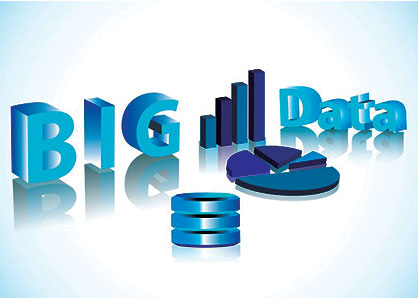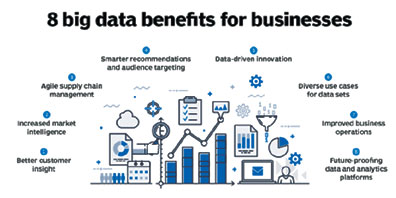
In today’s modern landscape, data stands as the lifeblood coursing through the veins of organizations spanning various industries, a dynamic force empowering them to navigate the complexities of decision-making and gain an advantageous edge. Human Resources (HR) departments, integral to the functioning of any organization, are not exempt from this sweeping trend. The advent of big data has ushered in a paradigm shift in HR practices, gifting HR professionals with a treasure trove of insights that fuel the optimization of talent management, elevate employee engagement, and consequently enhance overall organizational performance. In the following discourse, we shall embark on a journey to explore eight pivotal ways in which the towering edifice of big data bestows its benefits upon the realm of HR in contemporary times.
Revolutionizing Talent Acquisition and Recruitment:
HR departments grapple with the herculean task of identifying and securing the right talent to fortify their organizational ranks. The advent of big data has transformed the recruitment process into a lean, mean, and efficient machine. HR professionals now wield the power to harness copious volumes of data, dissect candidate profiles, discern hidden patterns, and predict the likelihood of a candidate’s triumph in a specific role. By tapping into data from multifarious sources such as the labyrinthine corridors of social media, job portals teeming with opportunities, and their own internal treasure troves of information, HR can sculpt their decision-making process into an art form, yielding improved candidate selection and drastically truncating the time-to-hire.

Embracing Predictive Analytics for Employee Performance: The antiquated practice of relying solely on performance appraisals and subjective evaluations to gauge employee performance is fading into oblivion. The era of big data analytics ushers in a new dawn, granting HR departments access to a bounty of employee data for rich insights into individual and team performance. By diligently scrutinizing data pertaining to key performance indicators, HR can discern nascent trends, uncover hidden patterns, and pinpoint potential areas ripe for refinement. This newfound knowledge equips organizations with the tools to implement proactive measures aimed at turbocharging employee productivity and engagement, eventually culminating in heightened overall performance.
Navigating the Waters of Employee Retention and Attrition Analysis: The churn of employees exiting the organization’s doors can pose a formidable challenge, siphoning resources and undercutting productivity. The wings of big data analytics provide HR departments with instruments to scrutinize and predict employee attrition. By peering through the looking glass at factors like employee satisfaction, engagement levels, compensation packages, and career trajectories, HR can preemptively identify potential flight risks and take action to retain top-tier talent. This may entail the deployment of targeted retention strategies, the crafting of personalized development blueprints, or a reconfiguration of the work-life equilibrium, all steeped in the insights distilled from data.
Customized Learning and Development: In today’s ceaselessly evolving business landscape, organizations must pivot towards a culture of perpetual learning and development to remain competitive. Big data unfurls a tapestry of possibilities, allowing HR departments to tailor training and development programs according to the unique needs and proclivities of individual employees. By sifting through data pertaining to employee skills, performance metrics, and historical learning journeys, HR can spot chasms in expertise and forge personalized educational paths. This not only kindles the fires of employee engagement and contentment but also guarantees that the organization possesses the precise arsenal of competencies requisite for surmounting present and future challenges.

Mastering Workforce Planning and Succession Management:
The mastery of workforce planning and succession management stands as a pivotal pillar underpinning the long-term prosperity of any organization. Big data analytics grants HR the power to dissect the current workforce’s demographics, the array of skills at their disposal, and their career aspirations, thus illuminating the path towards potential successors for key positions. By chiseling out talent pipelines and succession plans informed by data-driven insights, organizations can ensure a seamless transition when the mantle of a critical role passes hands. This proactive approach minimizes disruptions, slashes the time required to fill crucial positions, and erects a barrier against the looming specter of talent gaps.
Championing Diversity and Inclusion:
The clarion call for diversity and inclusion echoes with increasing fervor in organizations yearning to nurture innovation, kindle creativity, and make sounder decisions. Big data analytics steps into the fray as a formidable ally, aiding HR departments in measuring, monitoring, and enhancing diversity and inclusion initiatives. Through the scrutiny of demographic data, employee surveys, and performance metrics, HR can spotlight disparities or biases muddying the waters of hiring, promotions, and compensation procedures. This armament of evidence-based insights arms organizations with the means to fashion strategies that embolden diversity, ensure equal opportunities, and cultivate an inclusive work environment.

Championing Employee Well-being and Engagement:
The twin forces of employee well-being and engagement, invariably intertwined, constitute linchpins in the grand edifice of productivity, job satisfaction, and the overarching success of an organization. Big data analytics unfurls a treasure map leading to insights on employee sentiment, work patterns, and indicators of well-being. By dissecting data from diverse sources such as employee surveys, sentiment analysis of social media activity, and health and wellness initiatives, HR can discern the levers influencing employee well-being and engagement. This paves the way for the implementation of laser-focused initiatives, including flexible work arrangements, wellness programs, and schemes that shower recognition, all designed to fortify employee satisfaction and overall well-being.
HR Analytics:
A North Star for Strategic Decision-Making Big data’s transformative aura has propelled HR into the echelons of strategic partners within organizations, equipped to wield the scepter of data-driven decision-making at the highest levels. HR analytics, buttressed by the pillars of big data, stands as the font of invaluable insights concerning workforce trends, avenues for cost optimization, and the barometer measuring organizational performance. By diligently analyzing data spanning the gamut of recruitment, talent development, employee performance, and engagement, HR emerges as the vanguard that bestows actionable insights to guide the helm of strategic decision-making. This power affords organizations the means to harmonize their HR strategies with the broader symphony of business objectives, stoking the fires of innovation and securing an unassailable competitive edge.
Conclusion:
Big data stands as a revolutionary catalyst, fundamentally altering the DNA of HR practices and endowing HR professionals with a cornucopia of insights to sculpt talent management, augment employee engagement, and elevate the grand tapestry of organizational performance. From the realms of talent acquisition and the predictive wizardry of analytics to the fine art of personalized learning and development, big data propels HR into the echelons of a strategic function, a true maestro orchestrating the symphony of organizational success. As technology forges onward and the seas of data continue to swell, HR’s voyage through the realm of big data promises an unending stream of better-informed decisions and an inexhaustible wellspring of the potential inherent in their workforce.





